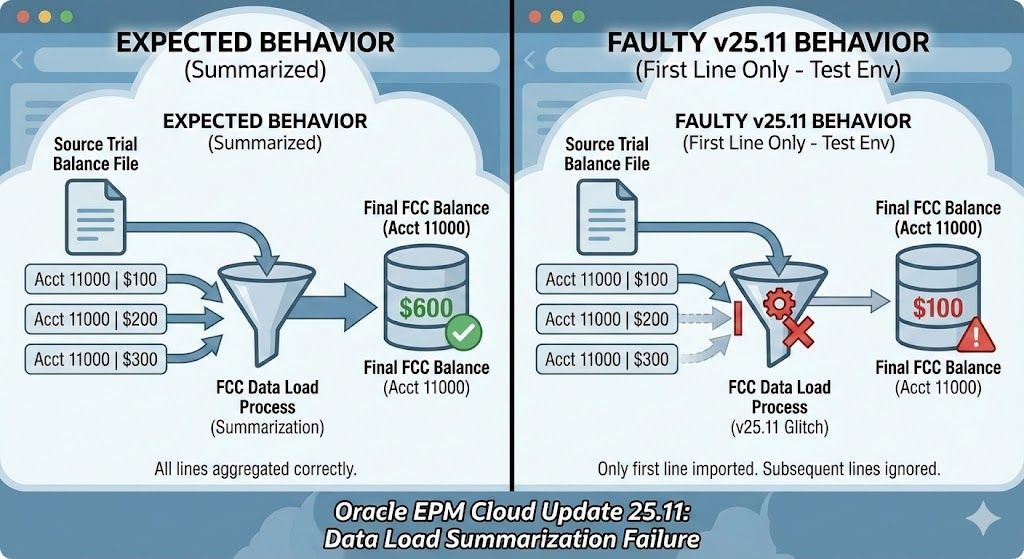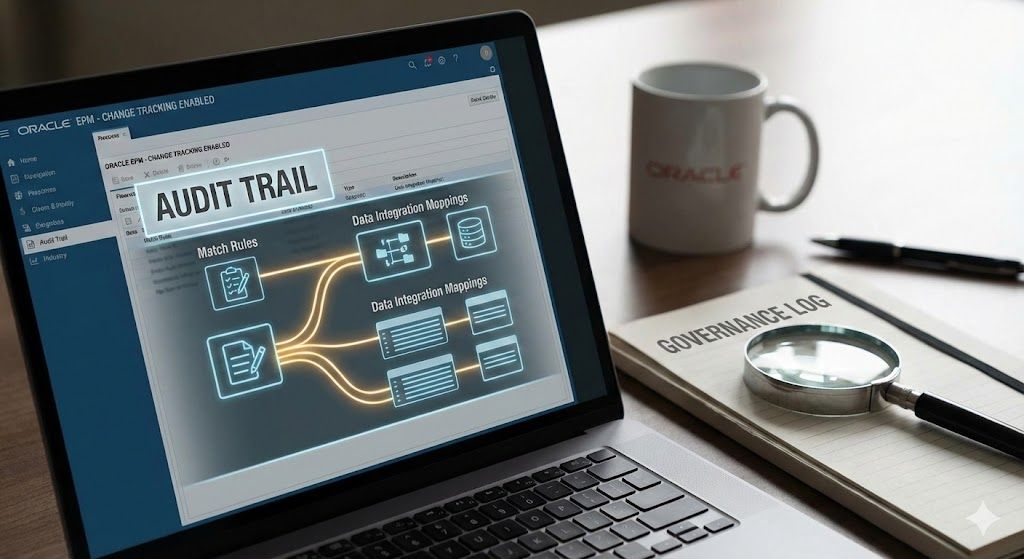Automating CTA in Oracle FCCS
Nadia Lodroman | Oracle EPM Consultant | Integrity in Every Insight.
4 August 2025
Listen to Tresora and Ledgeron's chatting about this blog post:
Automate CTA in Oracle FCCS | A Guide to Faster Financial Closing
For any global organization, the financial close process is a complex puzzle. One of the most challenging pieces has always been the Cumulative Translation Adjustment (CTA).
Traditionally, calculating CTA has been a painstaking, manual exercise involving complex spreadsheets, offline calculations, and manual journal entries. This process is not only time-consuming but also prone to errors and lacks a clear audit trail.
Even with other purpose-built consolidation tools, like OneStream, handling CTA can often require significant custom configuration or manual workarounds. However, Oracle Financial Consolidation and Close (FCCS)
transforms this process, turning a major headache into an automated, transparent, and flexible part of your standard consolidation.
The Old Way: A Recipe for Risk
Before diving into the FCCS solution, let's remember the pain of the traditional process. Finance teams would typically:
- Export trial balances from various ERPs for foreign subsidiaries.
- Manually apply different FX rates in a spreadsheet: ending rates for assets and liabilities, historical rates for equity contributions, and average rates for P&L items.
- Calculate the resulting imbalance—the CTA.
- Manually create and post a journal entry to the consolidation system to make the balance sheet balance.
This approach is fraught with problems, including a high risk of formula errors, a lack of transparency, and significant time wasted on low-value tasks.
The FCCS Advantage: Automated & Integrated CTA Calculation
Oracle FCCS eliminates this manual burden through its intelligent, out-of-the-box functionality. The magic lies in its pre-built consolidation logic and metadata-driven calculations.
Here’s how it works:
- Rate Application by Account Type: FCCS automatically applies the correct exchange rate based on the properties of each account. During configuration, you define which rate to use for different account types (ASSET, LIABILITY, EQUITY, REVENUE, EXPENSE).
- Automatic Calculation: When you run a consolidation for a parent entity, FCCS translates the financial data from its foreign subsidiaries. It applies the ending rate to Balance Sheet accounts and the average rate to P&L accounts. The system inherently understands that applying different rates will create an imbalance.
- The CTA Equation: The core of the translation is ensuring the balance sheet equation remains true in the parent currency. The imbalance created by using multiple rates is the CTA. Conceptually, the system calculates it as:
Translated Assets−Translated Liabilities−Translated Equity=CTA
FCCS automatically calculates this resulting difference and posts it to a dedicated system account, FCCS_CTA, ensuring the balance sheet always balances without any manual intervention.
The Power of Choice: Posting CTA to the Balance Sheet or OCI
This is where FCCS truly outshines other solutions. Different accounting standards and company policies dictate where the CTA should be reflected. Some organizations report it as a direct component of equity on the Balance Sheet, while others prefer to flow it through Other Comprehensive Income (OCI).
FCCS provides the flexibility to choose your desired treatment with a simple metadata change, requiring no complex rules or custom scripts.
Option 1: Reflect CTA in the Balance Sheet (Standard Method)
By default, the FCCS_CTA account is a child of FCCS_Total Equity. In this standard configuration, the calculated CTA amount automatically rolls up into the Retained Earnings Total
and subsequently into Total Equity
on the Balance Sheet. This is the most common and straightforward approach.
Option 2: Reflect CTA in OCI
For organizations that need to show the currency translation effect as part of their comprehensive income statement, FCC provides a specific account: FCCS_CICTA (Cumulative Translation Adjustment for Comprehensive Income).
To use this method, you must enable the "Include Comprehensive Income" feature during the application setup. When this feature is enabled:
- The translation adjustment is first calculated and posted to the FCCS_CICTA account. This account is part of the OCI section of the Income Statement.
- The movement in FCCS_CICTA for the period flows into the FCCS_CTA account on the Balance Sheet. This is managed through the system's roll-forward logic.
This approach provides a clear audit trail, showing how the period-over-period change in the CTA balance on the Balance Sheet is derived from the OCI section of the Income Statement. This aligns with accounting standards like IFRS and US GAAP, which require a statement of comprehensive income.
Why This is a Game-Changer 🚀
The FCCS approach to CTA is a massive improvement over traditional and even other modern EPM processes. The key benefits are:
✅ Accuracy: Automation eliminates the risk of human error from manual calculations and journal entries.
✅ Efficiency: It frees up your finance team to focus on analysis rather than data manipulation, dramatically accelerating the close cycle.
✅ Transparency
&
Auditability: The entire calculation is systematic and contained within FCCS. Auditors can easily trace how the value was derived, a stark contrast to offline "black box" spreadsheets.
✅ Flexibility: The ability to switch between Balance Sheet and OCI treatment with a simple metadata change provides powerful flexibility to adapt to changing reporting requirements without a painful redevelopment effort.
By automating the calculation and providing clear, simple options for its reporting treatment, Oracle FCCS turns CTA from a high-risk, manual task into a seamless and reliable component of your financial close.
Take the Next Step
Ready to eliminate manual CTA calculations and transform your financial close process? To learn more about how to implement and optimize Oracle FCCS for your organization, contact an expert for a personalised consultation.
Contact Nadia Lodroman today at www.lodroman.com.
Turning financial complexity into operational clarity. Because in Finance, Integrity is Permanent.






